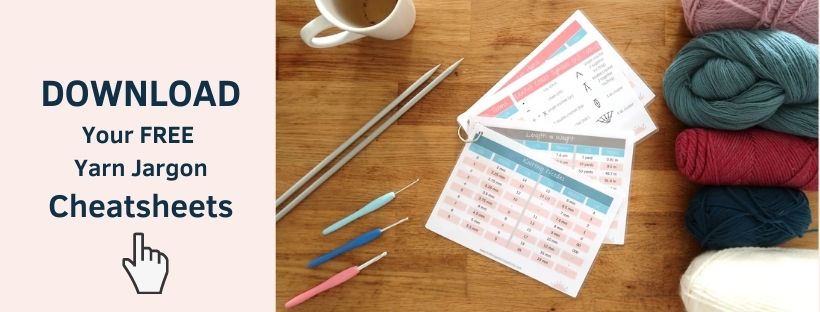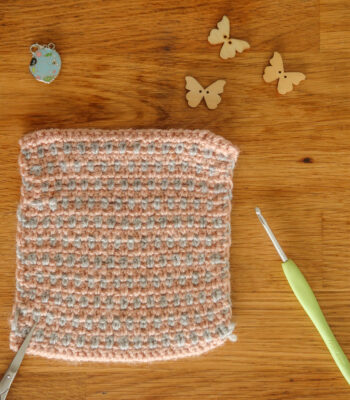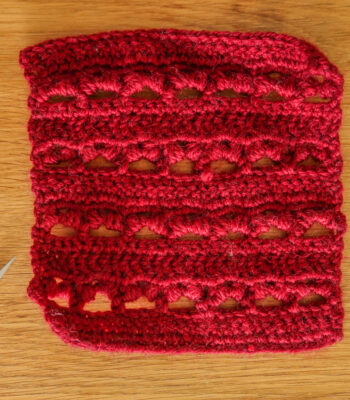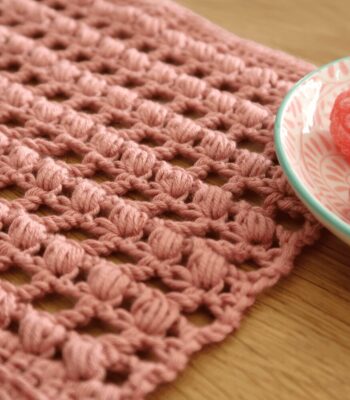My sister learned to knit with me when we were 10 and 11 years old. She made 2 scarfs then never touched yarn again until December 2019 when she asked me to teach her to crochet.
I never thought she would pick it up this quickly! 6 months later she was making this cute colorwork baby sweater from a written pattern on Make and Do Crew’s website, all on her own.

No time right now? Pin this post for later!
It took me years of trial and error to figure out how to make projects I was proud off and to learn to work with crochet patterns.
The difference? I’ve had to learn through trial and error, blindly working my way through yarn disasters with no plan or guidance.
She had me :
- showing her the easiest way to learn,
- pointing her in the right direction,
- and telling her about all the steps I used to ignore for years and regretted.
She now picks out her own patterns, the yarn and hook she needs and never asks me for help reading patterns anymore. We still spend a lot of time chatting about colors, what projects would be the cutest, and me begging her to make cute outfits for Basile while I crochet for the blog but that’s a whole other story ;).
Now you might think, that’s nice Hortense but I don’t have a yarn-addicted sister to teach me and guide me through the learning process. The thing is, you don’t need someone on speed dial to learn how to work with crochet patterns. You need a plan and I’m here to give you mine.
It starts with downloading your free Master Crochet Patterns Roadmap before I show you how I got my sister from complete crochet newbie to read and follow ANY crochet pattern in 6 months. And so can YOU!
1) Start with the Basics
My experience
When I started crochet, I got “tricked” by a knitting pattern for an elephant stuffy. The ears were the last missing piece and they were crocheted. I tried designing my own knit ears without success so I ordered a set of hooks and gave it a try. Thanks to Youtube and a lot of frogging (undoing my crochet) I finally managed to figure out the 5-row instructions and made his ears.
But I already knew how to read knitting patterns. The step by step instructions and stitches are different, but all the yarn knowledge is the same.
Her Experience
For my sister, I couldn’t let her start with any pattern. She isn’t the most patient (undoing is still very very hard for her to accept ;)) so I knew we had to start with the basics. I showed her how to crochet a chain and the double crochet stitch. She made a not so square baby blanket I fixed up with a contrasting color border and some hardcore blocking.
It was important her first project was a success. Sure it wasn’t perfect but it was a cute finished blanket. I’m pretty sure she would have given up on crochet if I had made her undo it until it was perfect. Patience and practice are part of the process.
2) Introducing new Stitches and Colors
After this first blanket, she was hooked. She started making more blankets. Browsing through Pinterest she discovered more stitches (the bobble stitch and puff stitches are still her favorites). With a little help from me and mostly Youtube (I’m a leftie and she’s right-handed + we lived on different continents at the time), she learned these new stitches and combined them to make blankets to gift.

She’d show me the stitches, size and color she wanted to make and I would tell her how many stitches to chain and how many rows etc. By this time, I still hadn’t managed to convince her to make a gauge swatch which made my design task really hard.
She just wouldn’t accept to crochet a 10 cm / 4″ square in her chosen yarn, hook and stitch that wouldn’t be used for the final project. She saw it as a complete waste of time. I get it. Gauge swatches are frustrating but they are the only way to make sure your project will end up the right size and shape (more on that below).
Side note: She finally sees the value in a gauge swatch now. However, she still hates making them so she always uses the same yarn. She recorded her gauge in the stitches and hook combinations she uses most so she rarely has to make a new swatch anymore.
When she started complaining her edges weren’t completely straight, I managed to convince her to block her blankets. (If you need any help knowing what blocking is and how to do it, check out my complete tutorial here).
It took me 15 years of knitting before I finally looked into what blocking was and why / how to do it. All my early projects would have looked so much more professional and polished if I hadn’t been so lazy and eager to get to the next project.
3) First Pattern
Her Experience
After a few blankets she wanted to move on to more complicated projects. So I helped her pick the perfect first pattern.
She picked a baby set (bonnet and diaper cover by Sewrella). Something quick, with a fairly easy construction and only stitches she already knew. Most importantly, it only came in one size.
I like to add only one new challenge at a time. Trying to read her first pattern while learning new stitches and techniques and follow the right size would have been super overwhelming.
Before she got started, I forced her to make a gauge swatch. If you want to make any sort of project where the shape and size is important, you have to make a proper gauge swatch and meet the pattern’s gauge as closely as possible.
My Experience
I learned this the hard way, after spending 113 hours knitting my first pattern to find out it didn’t fit at all. I choose to make a dress, a very poor first pattern choice. It had 6 sizes so I had to learn how to read the stitches + the sizes at the same time. Figure out increase and decrease techniques I didn’t know and spend all that time and headache just to realize it didn’t fit at all because I had no idea about gauge (and just skipped over that section of the pattern).
Don’t be like me and skip the first half of the pattern just because you don’t know what it means. Grab my FREE Master Crochet Patterns Roadmap and make sure you don’t miss a critical step.
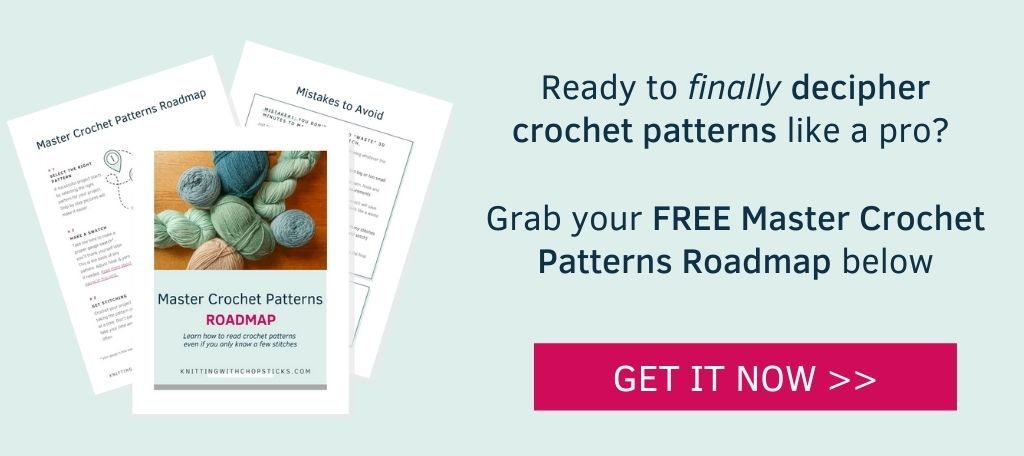
I made sure her first pattern had a video too. This really helped her correlate the written instructions with the visuals. A lot of designers include step-by-step pictures or a video for any tricky steps which are really helpful to visualize your project and double-check you’re on the right track when you’re getting started working with patterns.
I briefly introduced her to the different sections of a pattern and what information to find where, as well as what to use it for and she was good to go.
4) A Few Patterns Later
So happy with her achievement of her first baby gift set, she made a couple more then moved on to other patterns.
In the beginning, she needed my help to pick the right yarn weight (my FREE yarn jargon cheatsheets will help you here) and make sure she understood the instructions correctly but after 3-4 patterns, she made the cute colorwork baby sweater I showed you above all on her own without my help. I’m so proud of her!
I’m sharing her story to hopefully inspire you to learn reading crochet patterns the easy way. Once you have a plan and systematic approach you can skip the years of trial and error, abandoned wips (work in progress) and headaches.
There’s a few steps you need to take to follow a crochet pattern successfully. Skipping right to the Row 1 instruction sets the stage for a yarn disaster. It all starts with my FREE Master Crochet Patterns Roadmap (grab yours below!). This roadmap literally shows you the exact steps you should take (and in what order!) + common mistakes to avoid to learn how to read crochet patterns. Go from a tangled mess of yarn to a pretty project that actually looks like the pattern pictures in no time.



